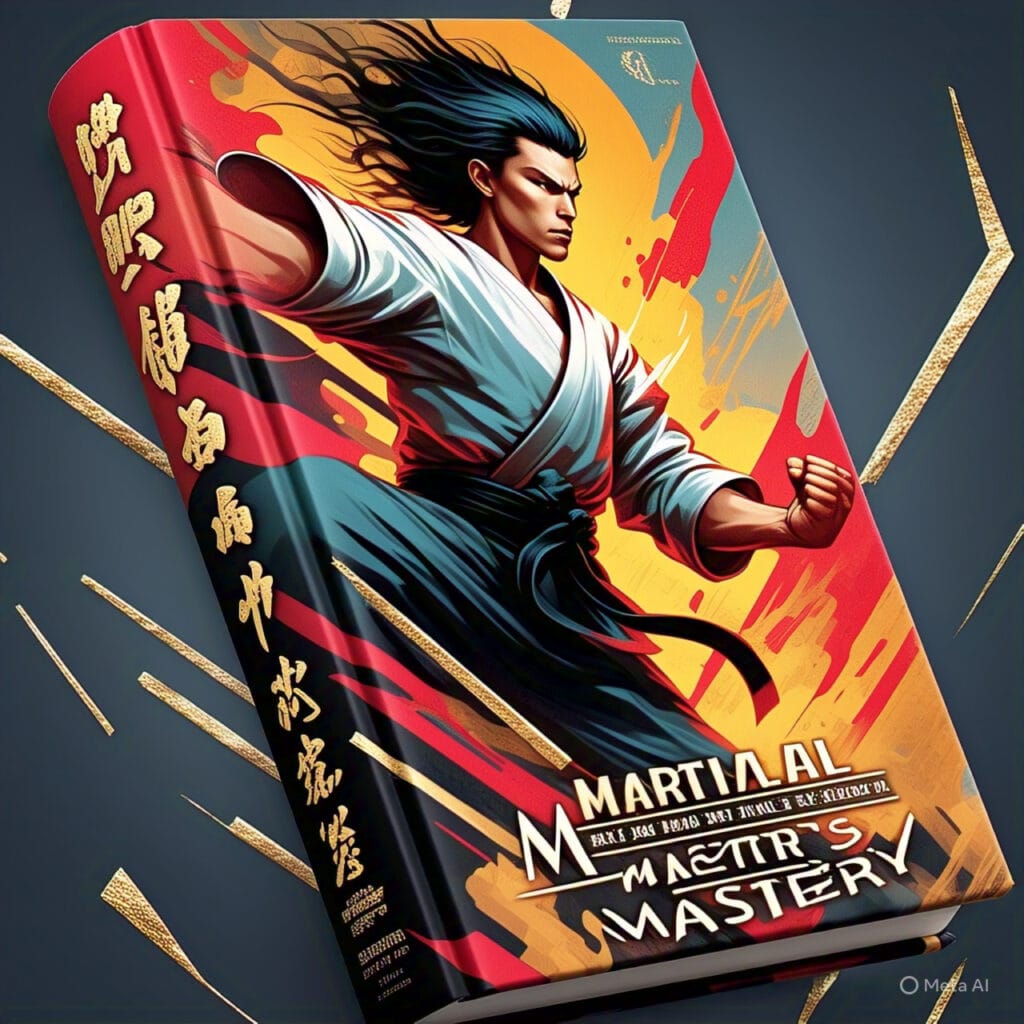Ninja martial arts, often referred to as ninjutsu, is a comprehensive system of combat and survival techniques that originated in feudal Japan.
The historical origins of ninjutsu can be traced back to the 12th century, during the tumultuous periods of war and political upheaval.
These arts were developed by the ninja, covert agents skilled in espionage, sabotage, guerrilla warfare, and assassination.
Unlike the more formalized samurai code of bushido, the ninja’s approach was pragmatic, focusing on adaptability and resourcefulness.
The key principles of ninja martial arts revolve around stealth, agility, and strategy.
Ninjutsu encompasses a wide array of skills, including unarmed combat, weapons training, disguise, escape techniques, and information gathering.
The essence of ninjutsu lies in the ability to remain unseen and undetected, allowing a ninja to complete their objectives without direct confrontation whenever possible.
This emphasis on stealth and deception distinguishes it from other martial arts that prioritize direct combat.
Unique characteristics of ninjutsu include its holistic approach to training.
Practitioners are taught to utilize their environment to their advantage, employing natural elements for camouflage and escape.
Moreover, the mental aspect of ninjutsu is equally critical.
The ninja’s mindset is one of patience, discipline, and acute awareness of their surroundings.
This mental training enables them to anticipate and counter threats effectively.
Foundational concepts of ninjutsu, such as “metsubushi” (blinding powders) and “henso-jutsu” (disguise techniques), exemplify the innovative and unconventional nature of ninja martial arts.
These methods were not just about physical prowess but also about outsmarting opponents.
In contemporary times, ninjutsu has evolved, integrating modern self-defense techniques while preserving its traditional roots.
This introduction sets the stage for a deeper exploration of the rules and practices of ninja martial arts.
As we delve further into the complete book of ninja martial arts rules.
we will uncover the intricate details that define this enigmatic and fascinating discipline.
The History and Evolution of Ninjutsu
Ninjutsu, often referred to as the art of the ninja, has a storied history that stretches back to ancient Japan.
Rooted in the tumultuous period of the Sengoku era, ninjutsu emerged as a form of unconventional warfare and espionage.
The origins of this martial art are somewhat enigmatic.
But it is widely believed that ninjutsu began in the mountainous regions of Iga and Kōga.
Where the rugged terrain provided a natural refuge for those seeking to evade the conflicts of warring states.
Key historical figures such as Daisuke Togakure and Kain Doshi are often credited with the formalization of ninjutsu techniques.
Daisuke Togakure, having fled from the battlefield, is said to have met Kain Doshi, a warrior monk.
Imparted upon him the principles of survival, guerrilla warfare, and the spiritual aspects of ninjutsu.
The amalgamation of these teachings laid the groundwork for what would become a sophisticated system of self-defense, strategy, and subterfuge.
As Japan progressed through the Edo period, the role of the ninja evolved.
During this time of relative peace, the practical applications of ninjutsu transformed.
While the need for covert operations diminished, the skills and knowledge of the ninja were preserved and adapted.
Ninjutsu began to incorporate elements of self-development and spiritual discipline.
Emphasizing the mind-body connection and the importance of mental fortitude.
In the modern era, ninjutsu has continued to evolve, finding new relevance as a martial art practiced worldwide.
Contemporary ninjutsu often integrates traditional techniques with modern training methodologies.
Figures such as Masaaki Hatsumi, the founder of the Bujinkan organization, have played a pivotal role in this resurgence.
By preserving ancient teachings while embracing contemporary practices, modern ninjutsu remains a dynamic and adaptive martial art.
The cultural context that shaped ninjutsu is deeply intertwined with Japan’s historical landscape.
From its clandestine origins to its present-day interpretations, ninjutsu has consistently adapted to the changing times and needs.
Ensuring its enduring legacy as a discipline of both physical prowess and strategic acumen.
Fundamental Principles and Philosophy
The essence of ninja martial arts extends beyond mere physical prowess.
It is deeply rooted in a philosophy that emphasizes the harmony between mind, body, and spirit.

This holistic approach ensures that practitioners develop not only their physical abilities but also their mental and spiritual fortitude.
The core principles of ninjutsu, including stealth, strategy, and discipline, are interwoven to create a comprehensive martial art form.
These principles are not just techniques; they are a way of life that guides ninjas in their quest for self-mastery and balance.
Stealth is a cornerstone of ninja martial arts, teaching practitioners the value of subtlety and discretion.
It is not merely about avoiding detection but about understanding the environment and using it to one’s advantage.
This principle extends to mental stealth, where a ninja learns to control their thoughts and emotions, maintaining a calm and focused mind even in the most challenging situations.
Strategy in ninjutsu is about more than just combat tactics;.
It involves a deep understanding of human nature and the ability to anticipate and outmaneuver opponents.
This requires a high level of mental acuity and the ability to think several steps ahead.
The strategic mind of a ninja is always calculating, adapting, and optimizing actions to achieve the desired outcome with minimal effort and risk.
Discipline is the backbone of ninja training, fostering a strong sense of self-control and perseverance.
It involves rigorous physical training to hone the body, as well as mental exercises to sharpen the mind.
Discipline ensures that ninjas remain focused and dedicated to their practice, continually striving for improvement and mastery.
Ultimately, the integration of mind, body, and spirit in ninja martial arts creates a balance and resilient practitioner.

This balance achieve through consistent training and the cultivation of inner peace and self-awareness.
By harmonizing these elements, ninjas are able to navigate the complexities of life with grace and effectiveness, embodying the true spirit of ninjutsu.
Basic Techniques and Training Methods
The foundational aspects of ninjutsu, often referred to as the art of the ninja, encompass a variety of basic techniques including stances, strikes, kicks, and defensive maneuvers.
These core components form the bedrock upon which more advance skills are built.
Ensuring that practitioners develop a balance and effective martial arts repertoire.
Stances in ninjutsu are critical as they provide stability and readiness for both offensive and defensive actions.
Basic stances include the Ichimonji no Kamae (one-line stance).
Which is pivotal for maintaining balance and preparing for movement, and the Jumonji no Kamae (cross stance).
Which offers a defensive posture ready for counterattacks.
Mastery of these stances is essential for effective execution of techniques.
Strikes in ninjutsu are varies and encompass hand strikes, such as the Shuto (knife hand) and Fudo Ken (clenched fist.
Each designed to target specific vulnerable points on an opponent’s body.
Kicks, including the Mae Geri (front kick) and Yoko Geri (side kick), are executed with precision to maximize impact while maintaining balance and readiness for subsequent moves.
Defensive maneuvers are equally important, with techniques such as Ukemi (falling techniques) enabling practitioners to safely navigate and recover from attacks.
Blocks and parries, like the Uke Nagashi (flowing block), are integral to redirecting the force of an opponent’s strike and creating opportunities for counterattack.
Training methods in ninjutsu are designed to rigorously develop these skills. Kata, or forms, are structure sequences of movements that teach practitioners the fundamental principles of ninjutsu.
Through repetitive practice, kata helps in ingraining techniques into muscle memory.
Sparring, or Randori, provides a dynamic environment where practitioners can apply their skills against a resisting opponent, fostering adaptability and real-time decision-making.
Conditioning exercises, such as strength training and flexibility drills, further enhance a ninja’s physical capabilities, ensuring they possess the necessary endurance and agility.
Progression from beginner to advanced levels involves a gradual increase in complexity and intensity of techniques and training regimens.
With each stage building upon the solid foundation establish in the initial phases of learning.
Weapons of the Ninja

Ninja martial arts are characterize by an array of distinctive weapons, each serving a unique purpose in both combat and training.
Among the most iconic is the katana, a curved, single-edge sword known for its sharpness and cutting precision.
The katana’s design allows for swift, decisive strikes, making it a formidable weapon in the hands of a skilled ninja.
Techniques associate with the katana include swift drawing and sheathing, known as iaijutsu, which emphasizes speed and accuracy.
Another well-known weapon is the shuriken, or throwing star.
These small, star-shaped projectiles were used to distract or injure opponents from a distance.
Shuriken techniques require precision and practice to ensure they hit their target effectively.
The bo staff, a long wooden stick, is also a staple in ninja weaponry.

Its versatility allows it use for striking, blocking, and sweeping maneuvers.
Mastery of the bo staff involves learning various stances and movements to maximize its defensive and offensive capabilities.
Lesser-known yet equally important are weapons like the kusarigama and the tekagi.
The kusarigama combines a kama (a traditional farming sickle) with a weighted chain.
This dual-purpose weapon can be used to entangle an opponent’s weapon or limbs with the chain, follow by a swift strike from the sickle.
Techniques for the kusarigama demand a high level of coordination and timing to be effective.
On the other hand, tekagi, or hand claws, were used for climbing as well as close combat.
These metal claws could rake across an opponent’s face or body, adding a brutal element to ninja tactics.
Each of these weapons plays a crucial role in the comprehensive training of a ninja.
From the precision requires for shuriken throwing to the strategic entanglement techniques of the kusarigama.
The diversity of ninja weaponry reflects the adaptability and resourcefulness that define ninja martial arts.
Stealth and Espionage Techniques
Stealth and espionage techniques are integral to the practice of ninjutsu, the martial art traditionally associate with ninjas.
These techniques are designed to enable ninjas to move undetect, gather crucial information, and accomplish missions without direct confrontation.
One of the key aspects of ninja stealth is situational awareness.
Which involves understanding and adapting to one’s environment.
Ninjas meticulously observe their surroundings, noting potential hiding spots, escape routes.
And any environmental elements that can assist in their concealment.
Infiltration methods are another cornerstone of ninja expertise.
These methods often involve disguises, allowing ninjas to blend seamlessly into various settings.
Disguises could range from simple clothing changes to elaborate costumes that mimic specific roles or personas.
By assuming different identities, ninjas could move freely within enemy territory, gather intelligence, and even sabotage operations without raising suspicion.
Camouflage is equally vital in the ninja’s arsenal.
Utilizing natural and artificial elements, ninjas would blend into their surroundings, making them nearly invisible.
Techniques such as “shinobi-iri” (silent movement) and “tonso-jutsu” (escape and evasion) employ to navigate through enemy lines undetected.
The use of shadows, foliage, and even the architecture of buildings provided ninjas with the cover need to approach their targets stealthily.
Psychological tactics also played a significant role in ninja operations.
Ninjas were skilled in manipulating the perceptions and emotions of their adversaries.
By spreading misinformation, creating illusions, and exploiting the fears and biases of their enemies, ninjas could achieve their objectives with minimal physical confrontation.

These psychological strategies not only facilitated successful espionage but also demoralize and confuse opponents, giving the ninja a strategic advantage.
Overall, the stealth and espionage techniques of ninjas are a testament to their ingenuity, adaptability, and deep understanding of human psychology.
These methods allow them to execute their missions with precision and effectiveness.
Underscoring the importance of subtlety and intelligence in martial arts.
Modern Applications and Adaptations
In contemporary times, the traditional art of ninjutsu has significant transformations to meet modern needs.
While the historical techniques were designe for espionage and unconventional warfare.
Today’s practitioners have adapte ninjutsu for various practical applications.
One of the primary areas where ninjutsu has found relevance is in self-defense.
Modern self-defense courses often incorporate ninja martial arts principles.
Such as situational awareness, quick reflexes, and strategic thinking, to equip individuals with the skills necessary to protect themselves in real-world scenarios.
Ninjutsu has also made its mark in law enforcement and military training.
Police and special forces units around the world have integrate elements of ninja martial arts into their regimen.
The emphasis on stealth, agility, and tactical planning inherent in ninjutsu provides law enforcement personnel with advance techniques for subduing suspects.
Conducting covert operations, and enhancing overall operational effectiveness.
Similarly, military units benefit from the strategic and survival skills that ninjutsu imparts.
Ensuring that they are prepare for diverse and challenging environments.
Moreover, modern practitioners of ninjutsu are dedicated to preserving the essence of this ancient art while also embracing innovations that enhance its relevance today.
Techniques such as silent movement, camouflage, and the use of improvised weapons are still taught.
But they are often updated with contemporary knowledge and technology.
For instance, modern camouflage techniques might integrate advance materials and designs.
While traditional weapons training might include the use of modern tactical gear.
In addition to these practical applications, ninjutsu maintains a cultural significance.
Attracting enthusiasts who seek to connect with its rich history and philosophy.
Institutions and dojos dedicate to the study of ninja martial arts continue to thrive.
Offering comprehensive training programs that honor the art’s legacy while encouraging innovation.
Through this blend of preservation and adaptation, ninjutsu remains a dynamic and impactful discipline in the modern world.
The Ethical Code of the Ninja
The ethical code of the ninja, often referred to as “ninpo,” is a cornerstone of the discipline, guiding practitioners in their journey of mastering ninjutsu.
This code is not merely a set of guidelines but a comprehensive framework that underscores the moral and ethical responsibilities inherent in the practice of ninja martial arts.
One of the fundamental tenets of the ninja ethical code is the proper use of skills.
Ninjas are train to wield immense power and precision, and with such capabilities comes the responsibility to use these skills judiciously.
The misuse of ninjutsu for personal gain or malicious intent is strictly forbidden.
Instead, practitioners are encourage to harness their abilities for the greater good, ensuring that their actions contribute positively to society.
Respect for life is another critical aspect of the ninja’s ethical code.
This principle emphasizes the sanctity of all living beings, advocating for a compassionate approach even in the face of conflict.
The art of ninjutsu is not just about physical prowess but also about understanding the value of life and exercising restraint.
Ninjas avoid unnecessary harm and to resolve conflicts through non-violent means whenever possible.
Furthermore, the ethical code highlights the importance of using one’s abilities for justice and protection.
Ninjas often are the protectors of the weak and defenders of justice.
This role requires a deep sense of duty and a commitment to uphold moral principles in all actions.
Whether it is safeguarding their community or standing against oppression.
Ninjas are expect to act with integrity and honor.
In essence, the ethical code of the ninja is a profound reminder that the true essence of ninjutsu lies not in the physical techniques but in the moral compass that guides its practitioners.
By adhering to this code, ninjas not only refine their skills but also cultivate a sense of purpose and responsibility.
Ensuring that their actions align with the values of justice, respect, and protection.










